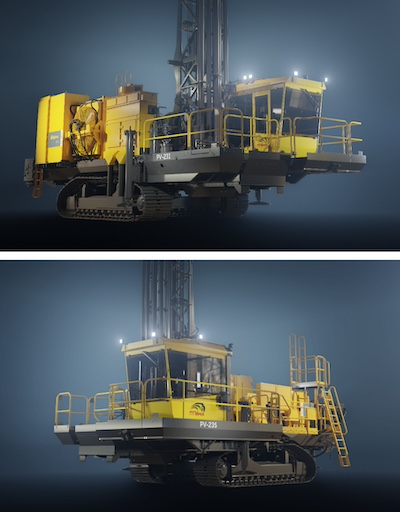Epiroc launches electric-driven Pit Viper 230 Series

Story Highlights
- Epiroc
- Pit Viper 231 E
- Pit Viper 235 E
- electric-driven Pit Viper 230 Series
- blasthole drill rigs
Related Articles
Epiroc proudly announces two additions to the Pit Viper family, the Pit Viper 231 E and Pit Viper 235 E. These new electric-driven blasthole drills offer operators safer, cleaner, and more sustainable operations while maintaining the legendary productivity and reliability that the Pit Viper line is renowned for.
Equipped with Epiroc’s proprietary operating system, Rig Control System (RCS), these drills offer advanced on-board and off-board automation that significantly enhances safety, accuracy, and productivity.
 Epiroc’s electric-driven blasthole drills are zero-emission machines, making operations cleaner and more sustainable. These drills contribute to a healthier planet by significantly reducing carbon emissions. With electric power at the core, these machines eliminate the need for traditional fuel, leading to substantial savings in operational costs. The Pit Viper 231 E and Pit Viper 235 E are a cost-effective solution for any mining operation.
Epiroc’s electric-driven blasthole drills are zero-emission machines, making operations cleaner and more sustainable. These drills contribute to a healthier planet by significantly reducing carbon emissions. With electric power at the core, these machines eliminate the need for traditional fuel, leading to substantial savings in operational costs. The Pit Viper 231 E and Pit Viper 235 E are a cost-effective solution for any mining operation.
“The Pit Viper 231 E and Pit Viper 235 E are part of our vocation to create greener drills that enable our customers to produce metals and minerals in the most sustainable way possible.” – Yara Hussein, Global Product Manager – Midrange Blasthole.
The Pit Viper 231 E can drill 152 mm – 250 mm (6 in – 9 7/8”) holes with up to 16.1 m (53 ft) capability. At the same time, the Pit Viper 235 E can drill holes up to 171mm to 270 mm (6-3/4″ to 10-5/8″) diameter. Both provide a full range of options to meet current and future needs, delivering unmatched efficiency without compromising safety, environmental responsibility, or operational cost-effectiveness.
The Pit Viper 231 E and Pit Viper 235 E drill rigs support Epiroc’s core mission of driving innovation in the mining industry for the benefit of customers and the environment, as Epiroc aims to reduce by half the CO2 emissions from their operations, transportation and the use of products by 2030.







